- Obi-Wan Kenobi Series Synopsis: The Perfect Bridge - August 13, 2023
- Tales of the Jedi Synopsis - August 2, 2023
- Best The Mandalorian Episodes Ranked: This is the Way - August 2, 2023
In this synopsis of Star Wars Episode III: Revenge of the Sith, I’ll be looking at one of the most critical aspects of the story as a whole.
Episode III: Revenge of the Sith is the final connection between the Original Trilogy and the Prequel Trilogy. It shows Anakin’s relationships with Padme, Obi-Wan, the Jedi Council, and Chancellor Palpatine (Darth Sidious). We see how the disastrous culmination of these combined factors leads to one of the most powerful, caring Jedi ever to live to turn to the dark side.
Of course, the following article contains spoilers, including what happens at the end of the film. If you haven’t seen it and don’t want to ruin it for yourself, stop reading here. If not, let’s get into it.
Episode III Plot
Battle Over Coruscant
Star Wars Episode III opens with a huge space battle. General Grievous has kidnapped the Chancellor on behalf of Count Dooku, and the Republic sends two of their best Jedi Knights – Obi-Wan Kenobi and Anakin Skywalker – to retrieve him.
They know that the Chancellor is on Grievous’ command ship and head there with a clone squadron led by Odd Ball (CC-2237). They’re engaged by tri-fighters and vulture droids as they dance their way between the Republic and Separatist fleets. The clones distract them, taking heavy casualties to allow Anakin and Obi-Wan to proceed with the mission.
As the clones face greater and greater firepower, Anakin wants to turn around to save them. Obi-Wan stops him, reminding him, “They’re doing their job so we can do ours.”
The two Jedi starfighters have tracking missiles fired at them by a vulture droid, with two heading for each of them. Anakin and R2-D2 spin, causing the missiles to crash into each other, while Obi-Wan diverts them into a swarm of buzz droids.
Although Obi-Wan successfully uses the buzz droids to avoid the missiles, they then land on his ship and begin tearing out wiring, shutting it down. He’s hardly looked away before the droids decapitate his astromech, R4. “Oh dear.”
Anakin saves Obi-Wan from the buzz droids before blowing up the shield generator, and the two sweep into the hangar. They leap out of their starfighters and quickly destroy the battle droids manning the area.
Both Jedi are well aware that the Chancellor is being used as bait to lure them in, but they are unsure why. They sense Count Dooku’s presence and know that Grievous must also be nearby. Since they’re curious to discover why they’re being set up (and because Obi-Wan is just the definition of chilled), they decide to spring the trap and see what happens.
When Anakin and Obi-Wan finally reach the Chancellor, his first words are, “Count Dooku.”
Turning around, they see the Count and two B2 super battle droids enter the room and, taking their cloaks off, prepare to fight him.
“You’re no match for him, he’s a Sith Lord,” scoffs the Chancellor.
“Chancellor Palpatine,” replies Obi-Wan, “Sith Lords are our speciality.”
The two Jedi and Dooku begin to fight, with the Sith knocking Obi-Wan out with relative ease on this occasion. Watching this happen, Anakin’s anger and hate wells up towards the Count, and he begins to drive him backward.
As they fight viciously in front of Palpatine (who is secretly watching his old apprentice fight his new apprentice), Anakin gives in to his emotions for a moment, holding Dooku still and slicing off his hands at the wrists – literally disarming him. The Chancellor will shortly explain to him, “It is only natural. He cut off your arm, and you wanted revenge.” In shock, the Sith Lord kneels before him with Anakin holding both his lightsaber and Dooku’s across his enemy’s neck. Dooku is seemingly unable to speak.
Coming to his senses, Anakin is willing to show Dooku mercy, but Palpatine urges him to “kill him. Kill him now.”
“DO IT.”
And thus, despite Anakin’s disappointment in himself at breaking the Jedi Code, Dooku’s head rolls. Before leaving the viewing room where Palpatine’s being held, Anakin goes over to his unconscious friend, resolving to carry him out with them despite Palpatine’s insistence that they leave him.
As they’re escaping, and once Obi-Wan has regained consciousness, Grievous activates ray shields around them, trapping them.
The party is marched to Grievous at the bridge as prisoners, where Obi-Wan and Grievous meet again. It’s the first time that Anakin has met the general.
Grievous, mocking them, tells them that their lightsabers will make a fine addition to his collection, opening his cloak to illustrate how many Jedi he’s killed.
At this moment, R2 creates a distraction, allowing Obi-Wan to Force Pull his lightsaber back into his hands and break free. He then cuts Anakin loose, who also Pulls his lightsaber from Grievous’ cloak. The two then wreak havoc on the bridge, destroying all the battle droids and Grievous’ two magnaguards (who can fight without their heads, apparently).
Although they corner Grievous, he breaks the window and flies out into space, where – as a cyborg – he can survive with few problems. R2 activates the shields on the windows, ensuring Obi-Wan, Anakin and Palpatine can breathe again, but Grievous has got away. When he reaches the escape pods, he launches all of them (including his own), leaving the Jedi no way off the ship.
As the ship breaks apart (“Not to worry, we are still flying half a ship!”), Anakin gets into the captain’s seat and attempts to land it on Coruscant. Despite a rather significant crash landing, Anakin manages to save them all. The Chancellor is returned to his office in the Senate.
And we’re just 23 minutes in.
With Padme on Coruscant
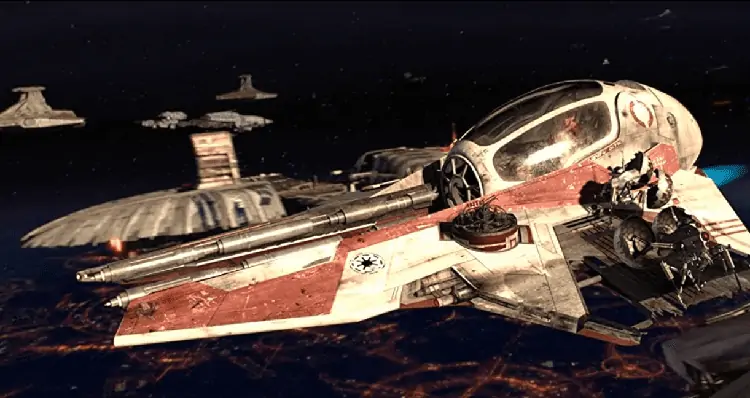
Anakin and Obi-Wan return the Chancellor safely to the waiting senators and Jedi Council. While Obi-Wan leaves his former pupil to his “glorious day with the politicians”, Anakin runs into Padme, his wife. So far, they’ve kept their relationship secret, although Kenobi has suspected all along that they were very close.
Meeting secretly (somewhat), Padme tells Anakin that she’s pregnant. While he’s glad, she’s scared, as her pregnancy would lead to a complete change in their lives: she would have to leave the Senate while he’d be expelled from the Jedi Order.
Anakin soon begins having nightmares that Padme will die in childbirth. His dreams, which he knows to be premonitions of the future from the Force, are precisely the same type as those he had before the death of his mother. The feelings of fear, guilt, and anguish at being unable to save her quickly rise in his mind, making him paranoid about his wife’s potential death.
He goes to Yoda in private to ask his advice. The Jedi Grand Master tells him, “Train yourself to let go of everything you fear to lose,” and warns him of how attachment leads to jealousy, which is the shadow of greed and could lead to a fall to the dark side.
Palpatine’s Influence on Anakin
The Chancellor meets with Anakin and informs him that he’s chosen him to be his personal representative on the Jedi Council. Although Anakin is honored, he tells Palpatine that the Jedi appoint their own members. His interference is unlikely to be taken well.
Usually, a member of the Jedi Council is automatically granted the rank of Master. However, because of the Chancellor’s bold move and Skywalker’s well-known recklessness, the Council reaches a compromise: Anakin will be permitted to sit on the Council, but he will remain a Jedi Knight.
Anakin is insulted, taking their withholding of rank personally, but accepts his seat nevertheless.
The Council then decides to send Master Yoda to Kashyyyk to oversee the Wookiees and clone troopers against the Separatist battle droid invasion. As Obi-Wan walks with Anakin after the meeting, he gives him an off-the-record assignment: to spy on Palpatine. It seems the Council only approved the Chancellor’s appointment of Anakin so that they could plant someone close to him to discover what he’s up to.
Obi-Wan is clearly troubled to put Anakin in the position of spying on someone he trusts. Although he accepts, he becomes further frustrated and disillusioned by the Council.
Padme upsets Anakin even further by asking him to use his influence and speak to the Chancellor to persuade him to end the war and “let diplomacy resume.” She can see what he can’t – that the Republic is becoming more and more corrupt. She even goes so far as to wonder whether they’re fighting for the right side. Again, Anakin takes this as personally insulting to Palpatine, whom he considers a great man and friend.
Sometime later, the Chancellor summons Anakin for a private meeting at the Coruscant Opera House, informing him that spies have located General Grievous hiding in the Outer Rim’s Utapau system. Telling the rest of his companions to leave them, Palpatine then quietly informs Anakin that he believes the Jedi are trying to overthrow him.
He accuses them of being power-hungry, jealous of his position in command of the Republic. Anakin attempts to defend the Jedi Council, but recent events seem to ring true with what the Chancellor is telling him.
At this point, Palpatine begins telling Anakin about the Sith legend of Darth Plagueis, who could influence the midi-chlorians using the Force to create life and save those he loved from death. Of course, Anakin is immediately desperate to learn how to wield this power and asks the Chancellor how he might do so. “Not from a Jedi,” is his response.
Developments
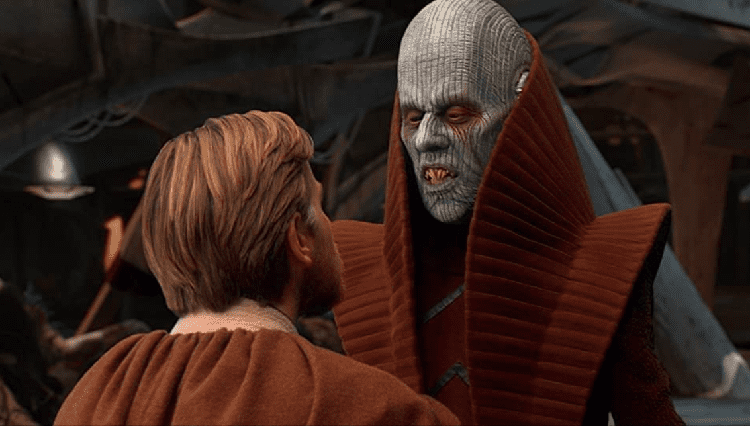
The Jedi Council votes to send Master Kenobi – accompanied by Commander Cody and the 212th Attack Battalion – to engage and defeat General Grievous, despite the Chancellor’s request that Anakin should go. At first, Anakin is – again – deeply upset, but he walks with Obi-Wan to see him onto the ship.
Here, he apologizes for his recent behavior, explaining that he’s just been so frustrated with the Council. Obi-Wan tells him to be patient, telling him it will not be long before the Council makes him a Master.
As they bid farewell to each other (tragically, for the last time before the rise of Darth Vader), Anakin says, “Obi-Wan,” causing him to turn back around, “may the Force be with you.”
“Goodbye, old friend,” says Obi-Wan. “May the Force be with you.”
Departing to Utapau, Kenobi locates and engages General Grievous. The news quickly arrives back on Coruscant, and Anakin, as the Chancellor’s representative on the Council, goes to tell him about the current situation. Here, Palpatine reveals himself as the mighty Sith Lord the Jedi have been looking for and that he holds the key to saving Padme from “certain death.”
Anakin draws his lightsaber, at first enraged that the man he had held so dear from when he first arrived on Coruscant had betrayed him. However, he decides against giving in to his impulses instead of heading back to the Jedi Council to inform Mace Windu of the Chancellor’s true identity.
Back at the Jedi Temple, Windu informs him that Obi-Wan has killed General Grievous, and therefore the Clone Wars are as good as over.
He and three other Jedi Masters – Kit Fisto, Saesee Tiin, and Agen Kolar – are on the way to Palpatine’s office to ensure that he now gives up the emergency powers granted to him at the start of the Clone Wars and relinquishes his position as head of the Republic, a job he’s held “long after his term has expired” (Obi-Wan to Anakin).
In return, Anakin explains that he knows Palpatine is the Sith Lord they’ve been searching for and that he wants to come with them to make the arrest. Windu, speaking more softly to him for the first time, tells Anakin, “No. If what you’ve told me is true, you will have gained my trust. But for now, remain here.”
Throughout all this, Anakin is incredibly conflicted. The Chancellor is the only person alive who can save Padme from the death he is sure will happen in childbirth. The further his wife’s pregnancy develops, the closer that moment comes. He needs the Jedi to keep Palpatine alive if he is to have any hope of saving her but doesn’t trust that they will.
Before long, he gives in to his fears. He jumps into a ship heading for the Chancellor’s office, where he finds three dead Jedi and Windu holding Palpatine at saber-point, having defeated him in battle.
Palpatine – or Darth Sidious – attempts to defeat Mace using Force Lightning, but the Jedi deflects it back at him, leaving him terribly scarred. Anakin screams at Windu to let him live, but the Jedi Master is determined that the Sith Lord is “too dangerous to be left alive.”
Raising his purple lightsaber back to deliver the finishing blow, Anakin yells, “I need him!”
As Windu swings his lightsaber down, Anakin makes a split-second decision to try to save Padme rather than remain loyal to the Jedi, activating his own saber and slicing off the Jedi’s hand. The Chancellor then hurls Mace out of the window using Force Lightning.
For a moment, Anakin reels in disbelief and shame at what he’s done. Then, he seems to realize that he’s started down a path from which there is no return and pledges himself to Sidious’ teachings. He’ll do whatever is necessary to save Padme, as he says to Palpatine, “I can’t live without her.”
The Dark Lord of the Sith then changes Anakin’s name to Darth Vader.
“Execute Order 66”
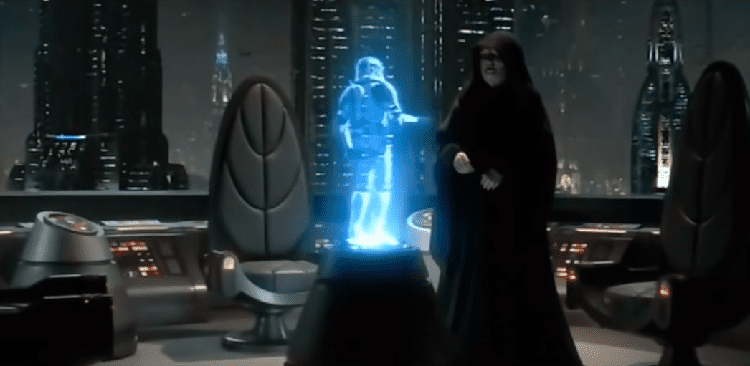
His new master then tells him, “All Jedi, including your friend Obi-Wan Kenobi, are now enemies of the Republic. Do what must be done. Do not hesitate. Show no mercy.” Without the swift execution of every Jedi possible, the galaxy would be forever stuck in a civil war.
In a violent, vicious attack, Palpatine sends messages to the leaders of every clone battalion across the galaxy, telling them to execute Order 66. As Clone Wars explains in much greater detail, the clones’ inhibitor chips are activated, overriding any thoughts of loyalty or attachment to their Jedi generals.
Almost all the Jedi are killed, and only several escape with their lives, such as Obi-Wan, who survives a fall from a great height after Cody opens fire on him.
At the same time, Anakin – along with most of the 501st Legion (with the beloved Captain Rex and 332nd Company aiding Ahsoka Tano across the galaxy) – leads an attack on the Jedi Temple.
Most of the more powerful, older Jedi are spread across many systems, fighting the Separatists. The Temple contains mostly guards, younglings, padawans, and knights, who are no match for the highly-trained 501st clone troopers.
Anakin also personally kills the Jedi younglings hiding out in the Council chambers, the very place he should have been watching over and caring for them from.
Once the most significant threats in the Temple have been subdued, Anakin leaves the clones to finish off any stragglers and returns to Padme. Here, he claims to have seen Mace Windu attempt to assassinate the Chancellor.
His allegiance now lies firmly with the Republic rather than the Jedi. As instructed by Palpatine, he tells his wife that he’s now going to Mustafar, where he’ll finish off the Separatist leaders.
Senator Bail Organa sees the attack on the Temple and hurries to help. However, a squad of clone troopers forces him to turn back around.
As he’s leaving, he sees a young Jedi padawan (Zett Jukassa) attack the clones, killing a few of them before being gunned down himself. Organa immediately realizes that the clones have turned on the Jedi and makes his escape off-world, searching for any surviving Jedi knights.
He comes across Yoda and Obi-Wan, who discover a distress beacon beaming out from the Temple, instructing all Jedi to return there immediately. To prevent further deaths, the two Jedi Masters agree to head back to the Temple ruins, where they will re-code the transmission and warn all Jedi to stay well away.
Bail is requested (ordered) to join an emergency meeting of Congress back on Coruscant, where the Chancellor explains that the Jedi have tried to overthrow the Republic. Now all remaining Jedi threats will be hunted down and eliminated.
He deceives the senators, persuading them that the Republic should be reorganized into “the first Galactic Empire.” As Senators Amidala and Organa watch in horror, Padme’s words ring true: “So this is how liberty dies… with thunderous applause.”
Meanwhile, Obi-Wan and Yoda eliminate the clones guarding the Temple and recalibrate the beacon. As they prepare to leave, Obi-Wan watches a security hologram to see who was responsible for the attack, despite Yoda’s warning that it’ll only bring him pain. Here, he sees Anakin mercilessly killing younglings. “It can’t be.”
Yoda and Obi-Wan are, so far as they know, the strongest surviving Jedi. Since Obi-Wan isn’t strong enough to face Darth Sidious, Yoda sends him to confront and destroy Vader, telling him that the boy he trained and loved, Anakin Skywalker, is gone, “consumed by Darth Vader.” Obi-Wan’s emotional distress is obvious, but he comes to terms with what he has to do.
Culmination
Obi-Wan goes to Padme as he attempts to find Anakin. She doesn’t believe his claim that her husband has turned to the dark side or that he led the attack on the Jedi Temple. Here, Obi-Wan confirms that she’s pregnant and that Anakin is the father. He can only apologize with utter grief over what he must do to the unborn child’s parent.
Padme immediately gets on her ship and flies to Mustafar, where Anakin said he would be. Here, he has eliminated all the Separatist leaders, including Nute Gunray and Wat Tambor, and sent out a message ordering all Separatist battle droids to shut down.
On Mustafar, Padme tells Anakin everything Obi-Wan told her, but he claims they are lies. Now, he explains, he’s the most powerful being in the galaxy, with the strength to keep her safe and eventually overthrow the Emperor. Shocked at his change, Padme backs away from him.
At that moment, Obi-Wan appears, having stowed away on Padme’s ship to find Anakin. Anakin assumes that Padme has betrayed him, and Force chokes her, leaving her unconscious.
At first Obi-Wan tries to reason with his former apprentice and friend in a desperate attempt to avoid having to face him. However, he soon realizes that, as Yoda says, Anakin Skywalker is gone. Now, there is only evil. “I will do what I must,” he says.
The two then begin a vicious lightsaber duel, with Anakin constantly driving Obi-Wan back with his more aggressive fighting style.
Back on Coruscant, Yoda confronts the Emperor, and the two engage in a battle that will decide the galaxy’s fate. They are equally matched in terms of Force powers and lightsaber dueling, each commanding incredible control, and precision.
Neither can defeat the other. After being knocked down to the ground in the Senate, Yoda realizes this and retreats. Bail Organa picks him up, where he heads into exile, believing he’s failed to stop the Sith.
On Mustafar, Anakin and Obi-Wan continue to fight, with Skywalker having the upper hand almost all the time. Obi-Wan eventually leaps back onto the high ground at the side of the river and begs Anakin to see that it’s over. If he attacks him now, he will have to cut him down.
Anakin, believing himself to be all-powerful, attempts to leap over Obi-Wan – mirroring Kenobi’s defeat of Darth Maul in The Phantom Menace. However, Obi-Wan expects this and, stepping to one side, slices off Anakin’s remaining biological hand and legs. The fight is over, and Obi-Wan has won, but he can’t bring himself to finish Anakin off.
In a heart-rendingly painful cry, Obi-Wan calls out to Anakin: “You were the Chosen One! It was said that you would destroy the Sith, not join them; bring balance to the Force, not leave it in darkness!”
“I hate you,” roars back Anakin as he slips further down towards the lava river.
“You were my brother, Anakin. I loved you.”
He then picks up Anakin’s lightsaber and can’t bear to watch as the lava ignites his clothes, leaving in the hope that the flames will do what he could not.
The fire doesn’t kill Vader, although it comes very close. Palpatine, sensing his apprentice is in danger, comes to Mustafar to save him just in time. To survive, the former Jedi must be placed into a semi-robotic suit and helmet, including a ventilator to help him breathe…
Obi-Wan takes Padme to a small medical facility on a distant asteroid, where he meets with Yoda and Bail Organa. Padme goes into labor and gives birth to twins, who she names Luke and Leia.
Although medical scans reveal her to be healthy, she seems to have “lost the will to live” and dies shortly after giving birth. Through his rage in the moment, Anakin inadvertently made his own nightmares come true. He sacrificed everything for her but, in his greed and quest for power, lost even her.
Anakin and the Emperor gaze over the creation of their new superweapon, a partially-built Death Star.
Padme’s body is returned to Naboo, her homeworld. The two children must be protected from Vader and, more importantly, the Emperor, so they are hidden. Leia is adopted by Bail Organa and taken back to his home planet of Alderaan, and Luke is taken by Obi-Wan to his step-uncle on Tatooine, where the Jedi will stay to watch over him.
Yoda tells Obi-Wan he has been in contact with Qui-Gon for a long time and that Qui-Gon learned, in part, how to maintain his consciousness through the Force after death. While in hiding on Tatooine, Obi-Wan will continue to study, training himself in the same way Yoda has been doing.
Leia is safely taken by Bail to his wife. Obi-Wan delivers Luke to his family and disappears into the nearby rocks and dunes of the desert as Owen and Beru gaze out at the twin sunset.
Episode III Key Characters and Motivations
Here are some of the key characters from Star Wars Episode III.
Anakin Skywalker
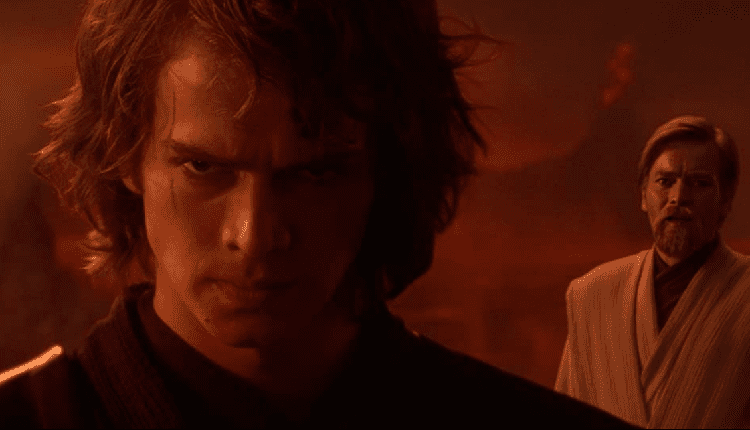
The story of Star Wars is, in essence, the story of Anakin/Darth Vader. Discovered as a boy on Tatooine, Qui-Gon Jinn brought him back to Coruscant to train him as his Jedi padawan. With his death at the hands of Maul, the responsibility fell to Obi-Wan Kenobi. Anakin has the potential to become the strongest Jedi ever, as he himself says to Padme towards the end of Episode III.
However, because he joined the Order as a boy rather than a baby, he’d already developed strong attachments to others, most notably his mother, Shmi. In Attack of the Clones, Anakin has visions of his mother dying and tries to save her, but he’s too late and gives in to his rage, slaying the Tusken Raider tribe that tortured her.
Now, in Episode III, he has the same dreams about his secret wife, Padme, and is determined to prevent losing the person he loves. He turns to the Jedi for help, but their attitudes leave him frustrated, and he eventually turns to the Dark Side to learn the power that can save her.
Obi-Wan Kenobi
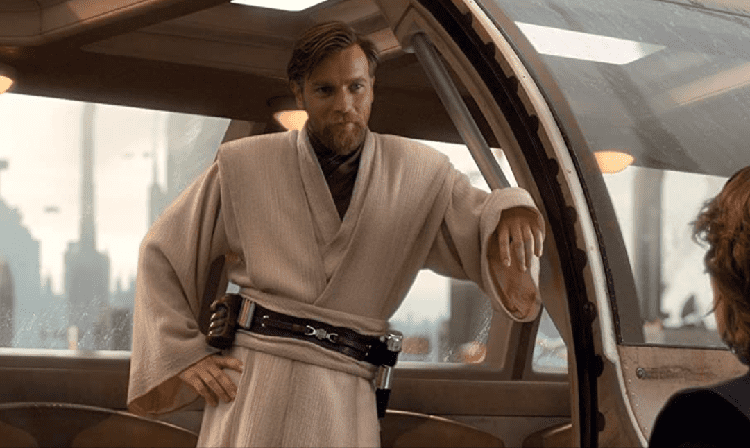
Obi-Wan, as the former Padawan of Qui-Gon Jinn, has developed into a Jedi Master, combining the selective wisdom of his former master and the traditional Jedi outlook. As Anakin’s mentor and now as his friend, they have a close, brotherly relationship that’s particularly apparent during the opening sequence as they rescue the Chancellor.
Kenobi is controlled, quiet, and confident – perhaps a touch overconfident – as he does what he can to mediate between an evermore angry Anakin and an increasingly ignorant Jedi Council.
His presence soothes his former apprentice and helps to keep him in line. Palpatine needs to separate the two if he is to convince Skywalker to turn to the dark side. Obi-Wan’s allegiance is to the Jedi Order, and therefore the Republic and the democracy it stands for.
Chancellor Palpatine
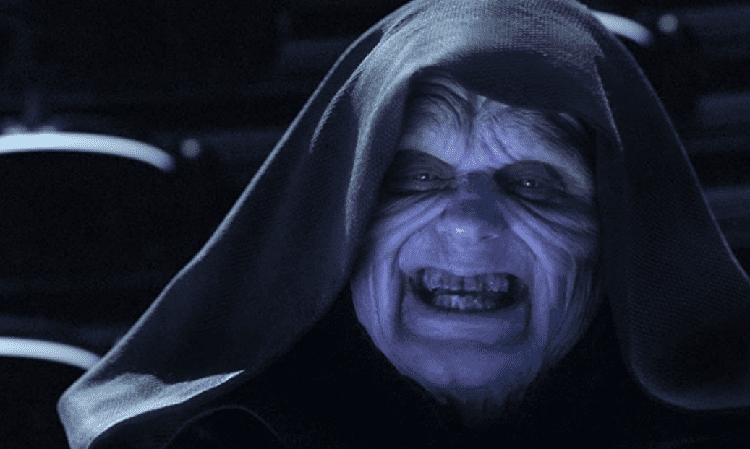
Chancellor Palpatine, otherwise known as the Emperor or Darth Sidious, has been working away at his master plan for decades. The Sith Lord disguised himself as a politician from Naboo, using his mastery of the dark side to blind the Jedi to his overall strategy and identity, clouding their connection to the Force.
As a senator, he worked his way into claiming the role of Supreme Chancellor of the Galactic Republic after manipulating Queen Amidala and Senator Jar Jar Binks. He then orchestrated the Clone Wars, controlling both the Republic (through himself, with emergency powers granted to allow him to stay in power for the duration of the war) and the Separatists through his apprentice, Count Dooku.
He used the Clone Wars to spread the Jedi thinly across the galaxy, planting an enemy in their midst whom they trusted and would turn their backs to in the clone troopers. When Anakin originally came to Coruscant, he took him under his wing and was the only father figure he had after Qui-Gon died.
His influence over Anakin would eventually lead him to turn him to the dark side, commencing Order 66 and wiping out the Jedi, thereby also turning the Republic into an Empire and wielding the ultimate power in the galaxy almost wholly unopposed.
Padme Amidala
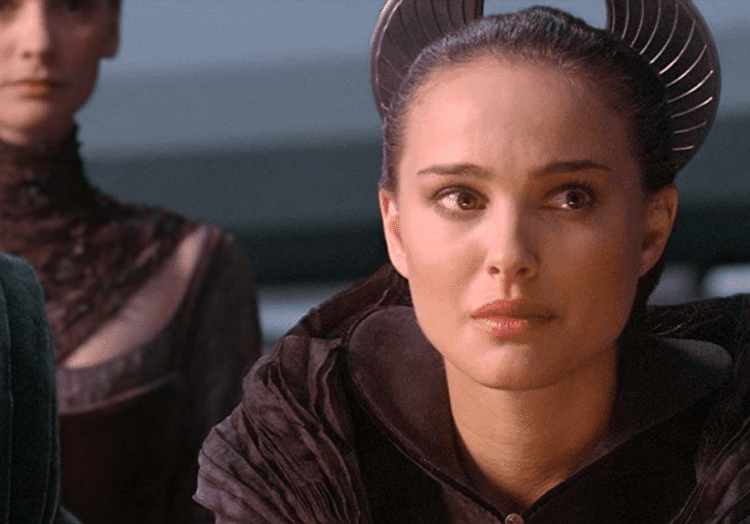
The former queen and senator from Naboo fell in love with Anakin. Although their love was forbidden by their occupations, a near-death encounter on Geonosis led them to declare their love for each other and marry shortly after. The marriage was kept secret for as long as possible until Padme’s pregnancy threatened that secrecy.
She was fearless and worked tirelessly to further good causes in the Senate, but ultimately concluded that the Republic she loved was becoming so corrupt that it no longer stood for its values. By this point in her life, Padme is becoming tired of politics. She wants to retire quietly with Anakin, seeing out the rest of their lives – and those of their children – on Naboo.
Yoda
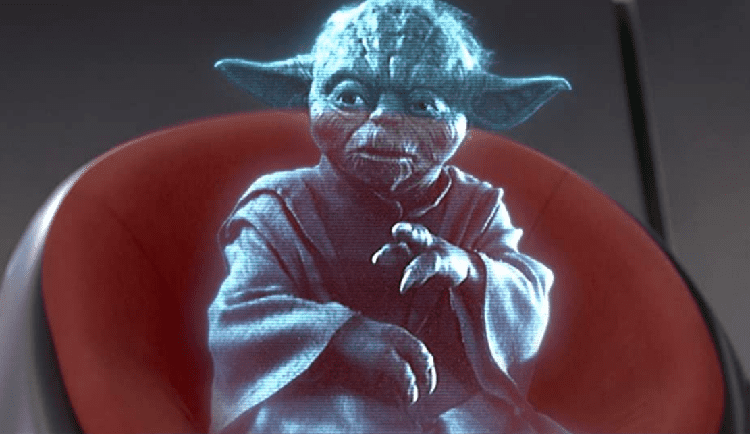
Jedi Grand Master Yoda is the head of the Jedi Order. He is the epitome of wisdom with the strongest connection to the Force of any Jedi, matching even the supreme power of Emperor Palpatine. Highly skilled with a lightsaber, too, his primary motivation is the survival and protection of the Jedi Order and the diplomatic Republic it serves.
While Yoda does everything he can in this regard, he’s ultimately outplayed – at least for the moment – by Sidious. However, he has one over the Emperor in the long run, having been trained by Qui-Gon to preserve his consciousness after death and instructing Obi-Wan to do the same. His and Kenobi’s actions lead to Luke Skywalker destroying the Empire. So their actions result in salvation after all.
Mace Windu
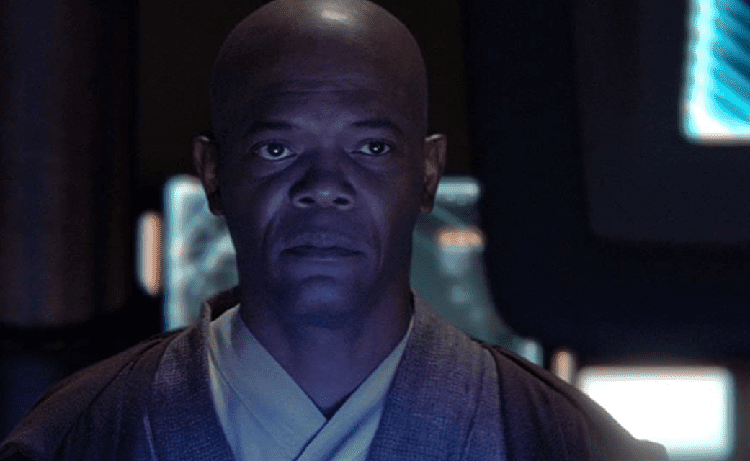
Windu, with his iconic purple lightsaber, is representative of the Jedi Order as a whole at the time of the Clone Wars. He’s incredibly powerful, and Star Wars lore even explains that he had the control and presence of mind to briefly tap into the dark side to help him win his battles.
Like the rest of the Jedi, Mace is blinded by Palpatine’s dark side powers and fails to see what’s right in front of their noses. His fatal mistake is his natural distrust of Anakin and self-confidence in himself and the Jedi. As a result, he alienates the Chosen One and refuses to admit or see his mistakes, and so although he defeats the Emperor in combat, Anakin turns against him, leading to his probable death.
Bail Organa
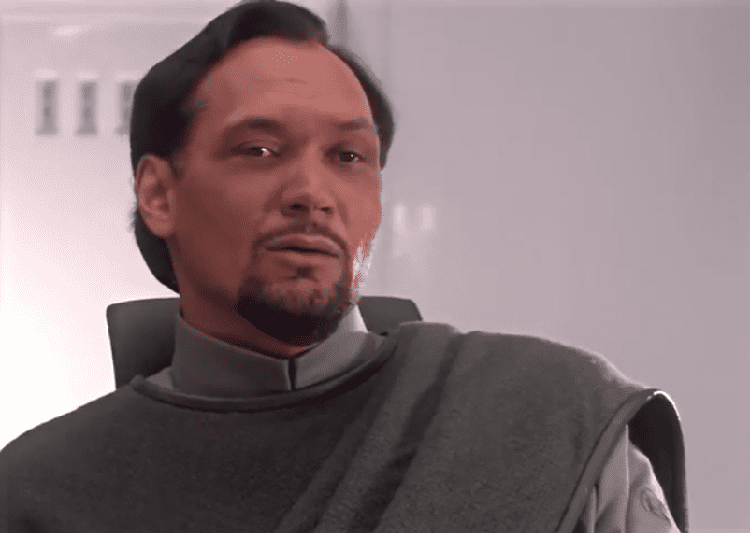
Organa is, like Padme Amidala, a senator that genuinely tries to do good for the people he serves. Unlike most of Congress, he isn’t taken in by Palpatine’s lies and remains loyal to the Jedi. Because of this, Obi-Wan and Yoda are confident leaving Leia in his and his wife’s loving care on Alderaan.
Episode III Themes
Compassion
Anakin Skywalker is a compassionate, emotional Jedi. As Dooku says to him at the start of the film, “You have hate; you have anger; but you won’t use them.” Unlike most of the Jedi of this era, Anakin – who came into the Order as a boy rather than a baby – has had time to form attachments with others, most notably his mother.
At the start of this episode, his instinct is to turn back and help the suffering clone trooper pilots, but Obi-Wan reminds him of their higher purpose of saving the Chancellor.
It’s reminiscent of a moment in Episode II: Attack of the Clones when Padme falls from a gunship. Anakin’s immediately distressed, ordering their ship to land so he can go to help her, but Obi-Wan scolds him, “Come to your senses! What do you think Padme would do were she in your position?”
“She would do her duty.”
Compared to Anakin, Obi-Wan is more withdrawn from the moment and can see the bigger picture. While Anakin’s weakness is impulsiveness, Obi-Wan’s is similar to that of most Jedi from this era: he’s, to some extent, blind to what’s going on immediately in front of him.
Together, Anakin and Obi-Wan have the complete picture. Obi-Wan tames Anakin’s recklessness and brings him peace, where Anakin opens Obi-Wan’s heart to the present. In an ideal situation, the Jedi would have learned from Anakin and altered how they viewed compassion.
Instead of forbidding all forms of attachment, they would have taught members of the Order how to control their impulses and fight for what they loved. In turn, Anakin would have understood the bigger picture and wouldn’t have reached the point where he sacrificed everything and everyone he knew for the power to save a life.
When Anakin goes to Yoda for advice, the Grand Master gently tells him, “Train yourself to let go of everything you fear to lose.” Beforehand, he’s explained to Anakin, “Rejoice for those around us who transform into the Force. Mourn them, do not. Miss them, do not. Attachment leads to jealousy. The shadow of greed, that is.” In The Phantom Menace, he also tells Anakin, “Fear is the path to the dark side. Fear leads to anger. Anger leads to hate. Hate leads to suffering.”
Yoda is, in principle, correct. However, in practice, it was easier for a Jedi to simply avoid trying to help. In Anakin’s case, Yoda is telling him to avoid trying to change the future.
The idea of the Jedi letting go of those they love too easily is further explored in Clone Wars, particularly in Weapons Factory (Season 2, Episode 6) with Anakin and Ahsoka paired with Luminara Unduli and Barriss Offee.
In the fifth season, Ahsoka was mistakenly expelled from the Jedi Order by the Jedi Council, leading Anakin to further resent them and question how it could be possible to show compassion without forming an attachment. The final season also explores Anakin’s attachment to Ahsoka.
Ultimately, the Jedi Order rejecting attachments led to Anakin’s turn to the dark side since it was his only option to save Padme. It then also caused the downfall of the Order as a result.
Much later, Obi-Wan and Yoda begin training Luke in the Jedi arts. Initially, unbeknownst to him, they’re developing in him the strength to defeat and kill his father, Vader/Anakin, and therefore to do what they could not. On the second Death Star, Luke defeats Vader by briefly giving into his emotions and the dark side. However, he comes to his senses and pushes those feelings away.
Instead of executing Vader, he throws away his dark side, showing a compassionate attachment for his father. This goes against everything Yoda, Obi-Wan, and the Emperor expected him to do and shows how both the Jedi and the Sith misunderstood how to properly love. His actions then lead to Vader’s redemption and the death of Palpatine.
Thus, the theme of attachment and compassionate love wraps up nicely. The Jedi Order during the time of the Republic and the Sith were both wrong. The Jedi taught a complete separation from the emotions that lead to suffering, preventing them from helping others.
The Sith preached giving in to those emotions entirely, which led to the evil of destroying everyone and everything around them to get what they wanted.
Luke Skywalker is the one to realize that attachment and love can bring those who have made mistakes back to the light. He has an unbreakable attachment to his father but does not become jealous. The end result is the galaxy’s salvation, allowing Anakin – the Chosen One – to defeat the Emperor and bring balance to the Force.
That’s perhaps an important lesson for all of us, too.
Why Does Anakin Turn to the Dark Side?
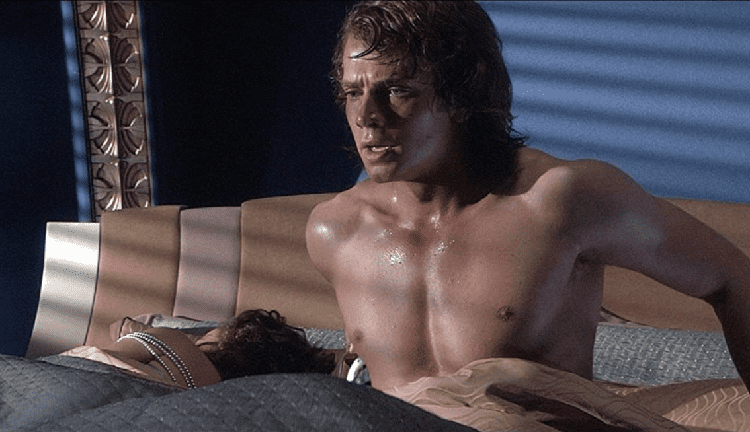
Some viewers criticize Anakin’s turn to the dark side as too simplistic. However, when it’s delved into (even ignoring how other series, such as Clone Wars and Rebels, explore the theme), there is much more to it than first meets the eye.
There are, in effect, two main reasons for Anakin’s transformation into Darth Vader, although they are in effect the same thing.
- The fear of loss (dreams of Padme’s death)
- Frustration at the Jedi Council
When Anakin dreamt of his mother’s death, he was too late to save her. The pain of losing her was almost too much for him to bear, and he took his rage and grief out on the Tusken Raider tribe that kidnapped her, slaying all of them – men, women, and children.
This is a frightening shadow of his attack on the Temple. Ever ashamed of that moment, he swears he’ll never lose someone he loves in that way again.
Now that he’s having the same dreams about Padme, he becomes fixated on saving her life. All his other responsibilities fade into insignificance as he begins panicking about how he can possibly save her.
When Palpatine reveals that he knows how to save her, it’s in stark contrast to Yoda’s gentle suggestion to just let things happen the way life intends. So far as Anakin can see, the dark side contains the quick path to the power he needs to save his wife’s life.
But this, in itself, isn’t enough to turn Anakin. The other crucial factor is his relationship with the Jedi Council, who make it clear that they don’t trust him. When the Jedi offer no route to saving Padme, he believes he must turn to another path.
Fed up with the Council’s constant need to put him down, he becomes power-hungry, desperate to change the galaxy for good and make it a place where he and his wife can live peacefully. Slowly, he comes to care about nothing else, not even Obi-Wan, as his fear becomes all-consuming. Yoda’s caution when he was a boy, “Fear is the path to the dark side,” rings scarily true here.
Anakin feels no loyalty to the Jedi Order. They have constantly belittled him and refused to help him save those he loved. Instead, he’s loyal to a few of its individual members, such as Obi-Wan, but also fosters a deep hatred for those who have always distrusted him, such as Ki-Adi-Mundi.
Thus, when he’s left with a choice – to save either Padme or the Jedi – he knows exactly what he wants to do.
To save Padme’s life, he must fully embrace the dark side to feel its power. There is no quicker path to turning to the dark side than to orchestrate the murder of most of the Jedi.
In an ironic twist, Anakin’s total commitment to the dark side actually causes him to lash out at Padme, eventually leading to her death. He fulfilled his nightmares himself.
Why Don’t the Jedi Council Trust Anakin?
Coming into the Order as a boy, Anakin was strong with the Force but unpredictable and rash, unlike how most Jedi were trained. He didn’t fit the mold.
His relationship with Chancellor Palpatine was an even more significant factor. Palpatine was increasingly interfering in Jedi affairs, representing how entangled the Order was in politics and how it was losing its independence. As the Chancellor threatened their power as guardians of the Republic, the Jedi became more and more suspicious of his motives, although nobody ever guessed he was the elusive Sith Lord.
Palpatine befriended Anakin and mentored him as he grew up on Coruscant, using his influence to drive a wedge between him and the Council. As Anakin became more frustrated with the Jedi Council, he turned further to Palpatine for advice and guidance.
Mace Windu is a clear example of the Council members’ distrust for Skywalker. As he says to him before heading off to arrest the Chancellor, “If what you have told me is true, you will have gained my trust.” Windu, seeing Anakin’s allegiances on the side of the Jedi rather than the Chancellor, is impressed and speaks warmly to him for perhaps the first time. Unfortunately, it’s probably too little too late for Anakin.
Why Does Mace Windu Want to Kill Palpatine Instead of Letting Him Stand Trial?
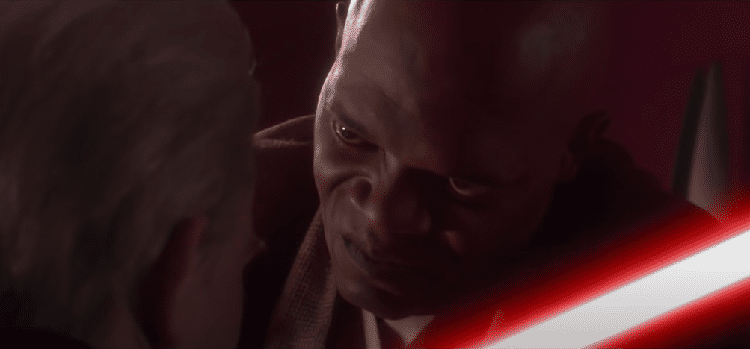
When he and the other three Jedi masters are first heading off to the Chancellor’s office, they intend on forcibly removing him from his position.
Now that the droid general, Grievous, has been killed, Palpatine’s emergency war powers should be revoked. The Jedi recognize that he’s corrupt and staying in office far beyond his term’s expiry, and thus – as servants of the Republic – they intend to make him abdicate.
As Anakin tells Mace that Palpatine is a Sith Lord, his plans change. They now approach the situation much more aggressively.
When the Jedi enter the Chancellor’s office, Windu says, “In the name of the Galactic Senate of the Republic, you are under arrest, Chancellor… the Senate will decide your fate.”
At this point, he clearly intends to bring Palpatine in alive and have him stand trial. However, after defeating him in battle, he acknowledges how powerful the Sith Lord is: “He has control of the Senate and all the courts. He is too dangerous to be left alive!”
Windu knows that if he brings Palpatine in alive, he’ll manipulate his position to escape and wreak havoc. Since the Chancellor controls the courts and the Senate, his trial would never be fair. Instead, Mace treats him as the enemy Sith that he really is.
To Anakin, entering the scene with Palpatine already defeated, it appears as though Windu is mercilessly overthrowing him. He hasn’t seen the process that the Jedi Master went through.
This further adds weight behind the Chancellor’s original statement to Anakin that he suspects the Jedi will try to overthrow him. Anakin now believes the Jedi are power-hungry and corrupt, although Mace’s intentions are honorable all along.
Frequently Asked Questions
Question: Who Takes Leia at the End of Episode III?
Answer: After Padme is choked by Vader on Mustafar, she gives birth in a medical facility that Obi-Wan takes her to. Luke and Leia are taken to the Skywalkers and Organas, respectively.
Bail Organa, the Republic Senator from Alderaan, takes Leia, partly out of respect for his friend, Padme, and attempts to raise her daughter according to her values. He and his wife, Queen Breha of Alderaan, brought Leia up – hence her title, Princess.
Question: How does Star Wars Episode III end?
Answer: Star Wars Episode III, Return of the Sith, matches the Prequel Trilogy with the Original Trilogy.
At the end of the episode, Obi-Wan defeats Vader but cannot force himself to deal the finishing blow to his old friend, instead leaving him to burn in the lava river on Mustafar. Vader, however, survives and must be placed in a robotic suit to continue to live and function.
Yoda takes on the Emperor but is unable to defeat him. Sidious, equally, cannot overcome Yoda, but he is already in control of the galaxy and therefore doesn’t need to. Realizing the inevitable, Yoda escapes into exile on Dagobah.
After choking Padme in a blind rage, Anakin’s children are born prematurely, and his wife passes away shortly after. Luke is taken to his step-uncle, Owen, on Tatooine, and Leia is adopted by Bail Organa and his wife. Obi-Wan delivers Luke to Owen and Beru and then remains on the planet to watch over him.
Through the Force, both Obi-Wan and Yoda are taught by Qui-Gon Jinn to preserve their consciousnesses after death. This is why they can appear as Force Ghosts in the Original Trilogy and have such disdain for death.
Question: Who dies in Episode III of Star Wars?
Answer: Return of the Sith is arguably the most tragic of the Skywalker Saga, resulting in the deaths of many much-loved Jedi and other main characters.
Disregarding all the clone troopers that give their lives fighting the Separatists, the following characters meet their ends:
Count Dooku – defeated and executed by Anakin in front of Palpatine on Grievous’ command ship.
General Grievous – killed by Obi-Wan on Utapau.
Agen Kolar – quickly dispatched by Chancellor Palpatine.
Saesee Tiin – also killed by Palpatine.
Kit Fisto – also killed by Palpatine.
Mace Windu – thrown out of a window by Palpatine after Anakin sliced his hand off and assumed dead.
Ki-Adi-Mundi – executed by Captain Bacara on Mygeeto during Order 66.
Aayla Secura – executed by Commander Bly on Felucia during Order 66.
Plo Koon – executed by Captain Jag on Cato Neimoidia during Order 66.
Stass Allie – executed by Commander Neyo on Saleucami during Order 66.
Commander Gree – beheaded by Yoda before he can execute him.
Zett Jukassa – the young padawan killed by clones in front of Bail Organa.
Separatist leaders – killed by Anakin to end the Clone Wars and tie up the last loose ends of Palpatine’s plan. The leaders included Nute Gunray, San Hill, Poggle the Lesser, Wat Tambor, and Rune Haako.
Padme Amidala – Anakin’s wife is ultimately killed by him in a fit of rage, as she cannot cope with his turn to the dark side.
In fact, of the Jedi Council at the time of Order 66, only Obi-Wan and Yoda would survive (and, of course, Anakin as Darth Vader). Order 66, combined with Palpatine’s slaughter of Kolar, Tiin, Fisto, and ultimately Windu, meant that nine out of the 12 Council members were killed (plus Anakin Skywalker, in symbol).
Question: Why did Yoda fail? Wasn’t the fight with Sidious a draw?
Answer: Darth Sidious had seized control of the Republic and reformed it into the Empire by the time Yoda confronted him. He was, in effect, in command of the entire galaxy, with a loyal, brainwashed clone army at his disposal.
To free the galaxy from the grip of the Emperor, Yoda had to defeat him. A draw wouldn’t be enough because Palpatine would stay in power, and the Jedi would remain in hiding. To restore balance, Yoda had to win.
In the end, the two were evenly matched, and so although the Jedi Master wasn’t defeated, Palpatine remained in power. Thus, Yoda considered his mission a failure, realizing he wasn’t strong enough to topple the Sith Lord.
Question: Why does the Jedi Council send Obi-Wan Kenobi to fight Grievous alone?
Answer: While it isn’t explicitly mentioned in the films, Obi-Wan is known amongst the Jedi as the master of Soresu (Form III), the most defensive lightsaber form.
Some speculate – including me – that Obi-Wan and Anakin completely retrain their approach to lightsaber combat after their humiliating defeat to Count Dooku in Attack of the Clones. Obi-Wan becomes the master of Soresu – defensive fighting. In contrast, Anakin trains himself in Djem So (Form V), a much more offensive and aggressive fighting style (which still retains some defensive aspects from Soresu). As Kenobi says when Count Dooku confronts them at the start of Revenge of the Sith, “This time we’ll do it together,” implying that he’ll be doing the defensive work and Anakin the offensive.
By doing this, they can keep up with Dooku’s superior swordsmanship and work together to defeat him. In theory.
Of course, it doesn’t quite go to plan, as Dooku focuses on separating them. He then dispatches with Obi-Wan, leaving him to take on Skywalker alone. Anakin eventually defeats him, but not through his lightsaber form. Rather, he briefly gives in to his anger and hatred, using the dark side to overpower the Count.
Because Obi-Wan is the master of Soresu, it’s the perfect defense against Grievous’ four-fold attacks. Grievous relies on intimidation and brute Force to get the better of his opponents, and so the most defensive lightsaber form is needed to counter him.
Finally, the Jedi knights are spread thinly across the galaxy. Yoda is needed on Kashyyyk, and many of the other Council members are fighting across various systems.
Only a few Jedi Masters are actually at the Jedi Temple on Coruscant at this time, and some need to stay to defend it, of course. It seems that the Jedi are spread so thinly that they can only afford to send one person to confront Grievous – and there is no better choice than Obi-Wan.
My Overall Opinion on Episode III
Many people would disagree with me, but Episode III is my favorite Star Wars film by quite some distance (and I love all of them).
It ties up the Prequels and the Original Trilogy in incredible detail. Despite questionable dialogue, George Lucas’s ability to tell a story is second to none.
To me, Revenge of the Sith carries the biggest emotional hit of any Star Wars film. Ewan McGregor as Obi-Wan really makes the character his own. His cry to Anakin at the end of the film emphasizes his character’s infinite grief in a way that Star Wars often struggles to do.
Anakin’s fall to the dark side is even more tragic than one might have imagined – he loses everything. The births of Luke and Leia also add a nice closing piece to the puzzle.
Although the Jedi Order was portrayed differently from how many fans initially imagined, I like it. Lucas is known to build his story per the characters and planets, and the Jedi Temple and Coruscant are shown in a way that entirely fits with how the Jedi became too involved in politics, eventually leading to their demise. They are portrayed as the ultimate good guys, but good guys that have been blinded by the dark side.
Looking for more interesting readings? Check out:


